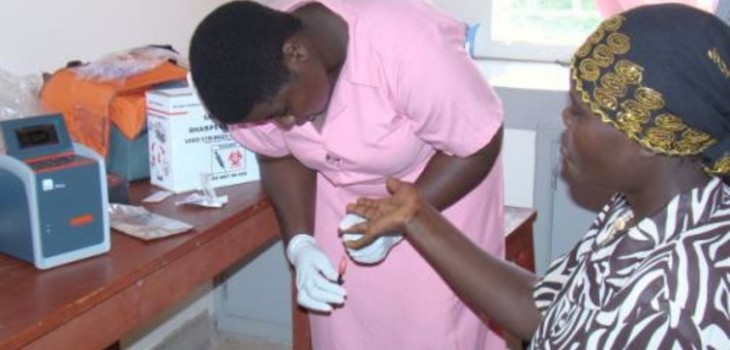Breaking negative attitudes to women is key to tackling HIV – here’s how to do it
London School of Hygiene & Tropical Medicine https://lshtm.ac.uk/themes/custom/lshtm/images/lshtm-logo-black.png Thursday 21 July 2016
“Women are supposed to be under men’s superiority in everything … you cannot respond when he says anything. You only have to do what he says”. That’s what one young woman told staff at Raising Voices, a Ugandan violence prevention charity, that she used to think before she became a community activist. Sadly, throughout many parts of the world, such views are still common. ![]()
These beliefs are also fuelling an epidemic of HIV in women – limiting women’s access to education and economic opportunities, condoning men’s use of violence against them, and ultimately making it difficult for women to refuse sex or request condom use.
HIV is now the leading cause of death and sickness among women of reproductive age in low and middle-income countries. In Sub-Saharan Africa, the region most affected by HIV, adolescent and young women bear the heaviest burden – they are twice as likely to become infected as their male peers.
Current approaches to tackling the epidemic just don’t seem to be enough. “Right now what we do with HIV is we tell people they should use condoms”, explains Lori Heise, research director of STRIVE, an international research consortium led by the London School of Hygiene and Tropical Medicine, “but sometimes people are living in contexts where making the healthy choice is very difficult … because of poverty, because of gender norms and the degree to which women are disadvantaged in society”.
Empowering women
These gender norms that promote men’s dominance over women are now a growing focus of HIV prevention efforts. So, can we change these norms? And if so, how?
Addressing multiple strands of female disadvantage simultaneously has been shown to be very effective. IMAGE, a programme for rural South African women, combined microfinance –- small loans to start businesses or other income generating activities –- with socially empowering group learning sessions which covered topics ranging from gender and cultural beliefs to domestic violence and HIV. It proved a winning combination. Rates of partner violence against women were halved, and younger women became less likely to have unprotected sex and more likely to access HIV testing.
Of course, it’s not just women that we need to focus on. A whole series of behaviours that some men equate with “being a man” – having multiple sexual partners, visiting sex-workers, binge drinking and using violence against their female partners –- increase those men’s risk of acquiring HIV and passing the infection on to their female partners. Clearly, the best way to challenge such notions of manhood is to target young men and adolescent boys.
Programme H, developed by a Brazilian NGO, is now used in over 22 countries. The programme engages adolescent boys and young men in months of interactive group sessions focused on, among other topics, gender, sexuality, fatherhood, violence and HIV. In its various incarnations, Programme H has succeeded in changing gender attitudes, improving relationships, reducing violence against women and increasing condom use.
It may also have led to a decrease in sexually transmitted diseases, as fewer symptoms have been reported. However, the incidence of HIV has not yet been investigated. Adaptations of Programme H that have proved most successful have used youth-led community campaigns to make sure that peers are receptive to the ideas and behaviours of boys who have been through the programme.
Community effort
The importance of what the wider community thinks and does cannot be understated. This makes a newer approach, community mobilisation, one of the most exciting – albeit challenging – approaches out there. But it is achievable, as demonstrated by two programmes in Uganda –- SASA! in urban Kampala, and SHARE in rural Rakai.
Community activists are vital players in this type of intervention – regular men and women from the community trained up alongside local government, cultural leaders, police and healthcare providers, to deliver activities within their own neighbourhoods. Through thousands of activities and encounters -– ranging from community meetings and door-to-door discussions to community dramas, informal chats at taxi ranks and consultations with traditional marriage counsellors – the programme takes on a life of its own.
Change doesn’t happen overnight, but it can happen impressively quickly. After three years, SASA! halved the rates of physical partner violence against women. Women felt more able to refuse sex, and men became less likely to have multiple concurrent sexual partners. SHARE strikingly reduced both partner violence and rates of new HIV infection among community members.
As great minds converge on Durban, South Africa, this week for the biennial International AIDS conference, there is reason for optimism, but no place for complacency. Urgent questions should be high up the agenda. How can we deliver promising programmes on a larger scale? What opportunities are there to better integrate violence and HIV prevention programming? And how can we ensure norm-changing programmes are adequately funded and taken to scale?
The answers may not come easily, but in the words of a SASA! activist, “what used to be done by our ancestors can be changed”. And that change can’t come soon enough for the millions of women in this world who are living in the shadow of HIV.
Tanya Abramsky, Research Fellow in Epidemiology, London School of Hygiene & Tropical Medicine
This article was originally published on The Conversation. Read the original article.
Image: Midwife draws blood to establish HIV levels. Credit: USAID Africa BureauOur postgraduate taught courses provide health practitioners, clinicians, policy-makers, scientists and recent graduates with a world-class qualification in public and global health.
If you are coming to LSHTM to study a distance learning programme (PG Cert, PG Dip, MSc or individual modules) starting in 2024, you may be eligible for a 5% discount on your tuition fees.
These fee reduction schemes are available for a limited time only.